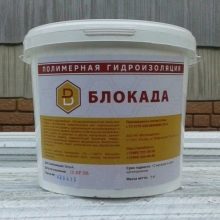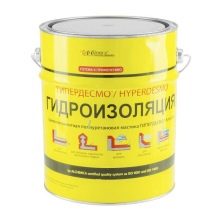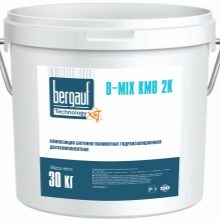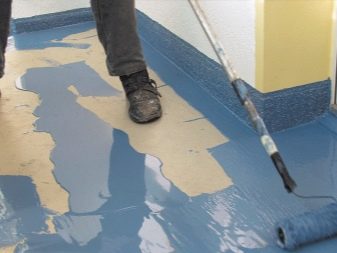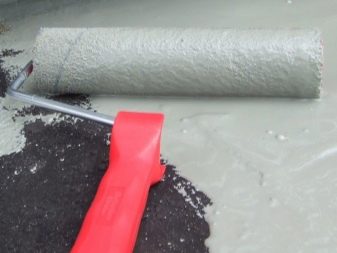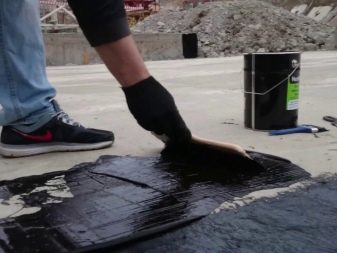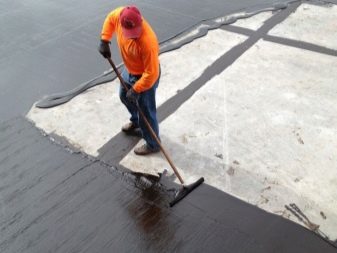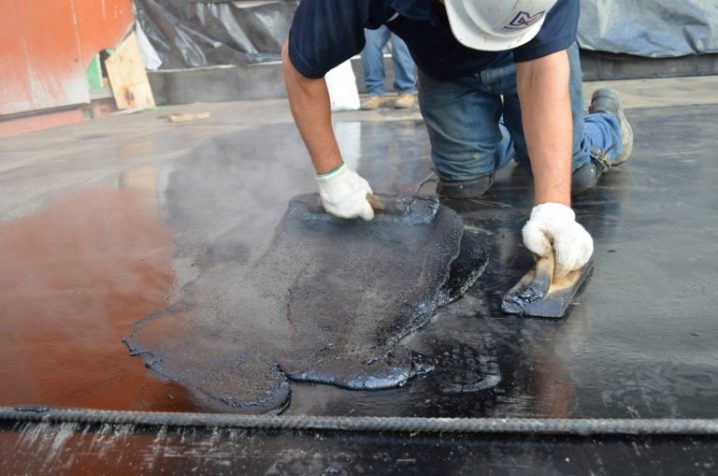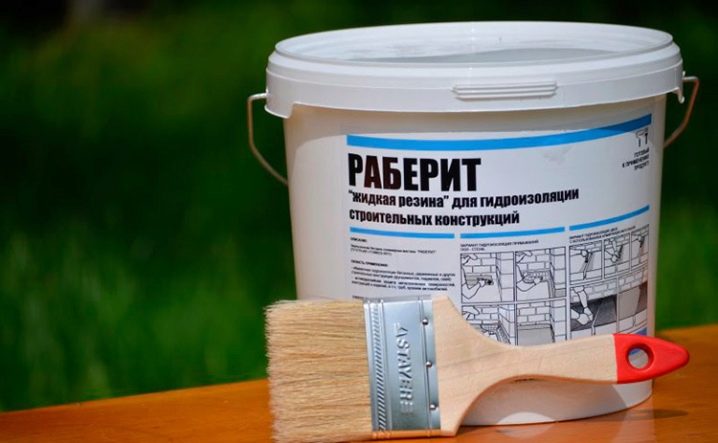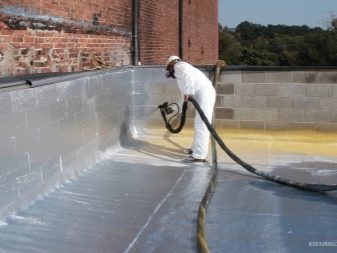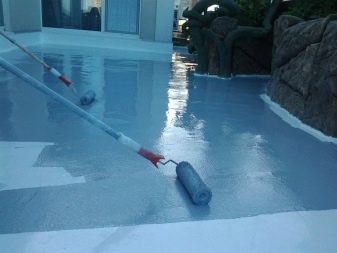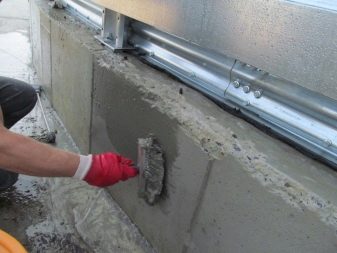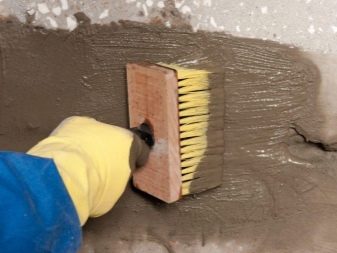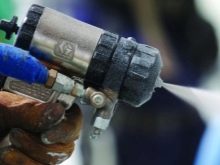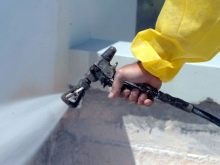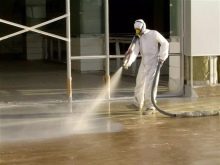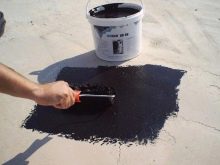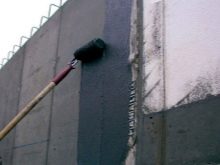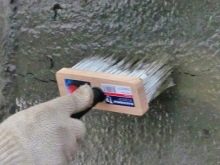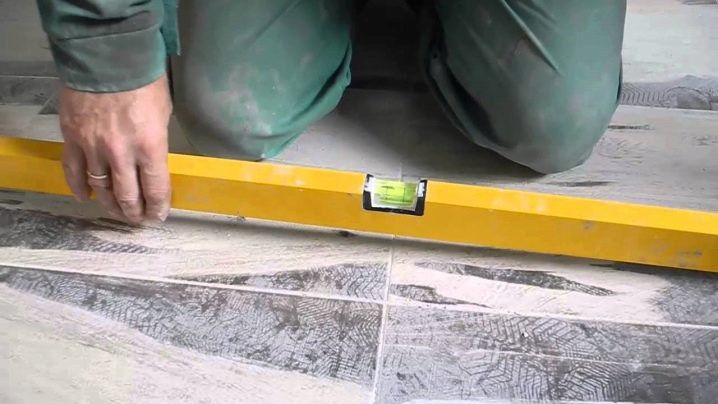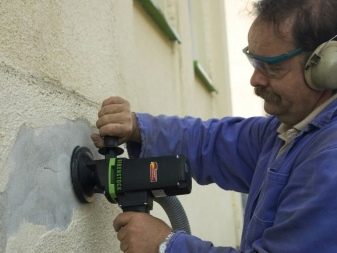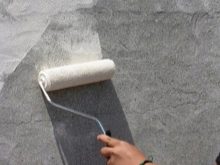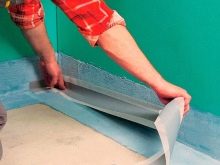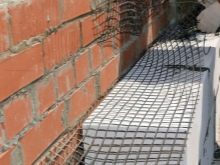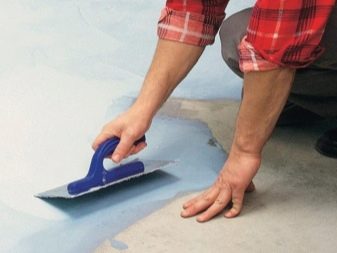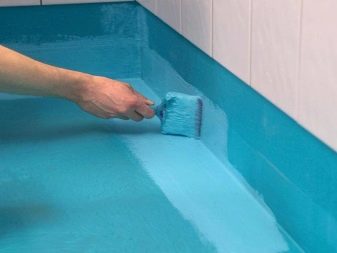Polymer waterproofing: a variety of materials and features of choice

Not a single construction of a residential house or institution, not a single interior decoration is complete without the use of waterproofing. A wide range of the proposed waterproofing compositions will allow you to easily choose what you need. One of the widely used compositions is polymer waterproofing.
Special features
Polymer waterproofing for the most part consists of bitumen emulsion, which consists of latex particles. The choice of this waterproofing solution on the shelves of construction stores is huge. The composition may vary. The contents of the composition directly affects the manufacturer and purpose of the solution.
Do not forget that a certain air temperature can affect insulating compounds. This provokes polymerization. As a result, the formation of a durable and volatile membrane. Its characteristics satisfy all requirements in the construction process.
Advantages and disadvantages
The use of polymer base as an insulation has many advantages. Having correctly selected the waterproofing composition and the specifics of its application, you will get a surface with water-repellent properties.
In addition, there are a number of positive aspects that are worth considering in more detail:
- Today, up to 400% elasticity can be achieved from the polymer base.
- The lifetime of the resulting waterproofing surface can be from 25 to 50 years.
- The guarantee of possible ingress of water excludes the presence of formation of monolithic coatings in which there are no joints.
- This material makes it possible to apply it to any kind of structures, including a complex or non-standard configuration, and even in the presence of relief.
- Polymer waterproofing is one of the most durable compounds that is unwavering to any kind of mechanical, chemical, ultraviolet and temperature (from -60 to +110 degrees) effects.
- High wear resistance of the composition. For a polymer base, the creation of a layer is typical, which subsequently does not become thinner, while remaining a reliable and uniform coating regardless of the conditions and the term of exploitation.
- Economical consumption of material is achieved by a small thickness of the coating of the polymer composition. This is quite enough to create a strong waterproofing.
- Creating adhesion with different materials, such as concrete, metal or wood, as well as many different types of finishing coatings.
- This waterproofing compound is easy to apply. In this case, it is possible to choose the necessary application technology depending on the presence or absence of certain skills and knowledge.
- The time required for the waterproofing composition to harden is minimal, which favorably affects the overall course of construction work.
- The absence of toxic evaporation and toxic substances in the composition guarantee the safety and harmlessness of the polymer base.
- The insulation coating is excellent for repair.In other words, if any defect appears on the surface of the polymer composition, it is rather easy to restore it. To do this, you will need to put an additional layer on the existing one along the entire perimeter or in the required area.
- The polymer composition has vapor impermeability, which is one of the fundamental qualities in order to create a comfortable microclimate and protect certain building materials from the adverse effects of water.
- A huge range of color shades of the polymer composition will allow you to apply this composition as a finishing decorative material.
As with any product, polymer waterproofing composition has disadvantages, of which it is particularly possible to highlight its high cost. The composition is much more expensive than its counterparts, such as roofing material and bitumen. But it is worth noting that the quality of the coating obtained will fully justify the high cost.
To recognize the advantages and benefits of this option will reduce the financial cost of additional repairs and replacement of less waterproofing coating quality.
Types and selection rules
A wide range of waterproofing polymer bases can confuse consumers, and therefore it is recommended to get acquainted in advance with a variety of insulating compounds offered by manufacturers.
There are several criteria that will help you choose the right material that meets all your requirements and wishes:
- Density. The consistency of waterproofing, which is based on a polymer solution, can be divided into liquid and semi-liquid composition. It is worth noting that there is an alternative in the format of a roll membrane, which is not inferior to liquid bases, but it enjoys little demand from consumers.
- Function. Today, the manufacturer is developing a huge range for its proprietary line. Each product is necessarily produced with recommendations for the application and indication of the specific structural element of the structure for which it is intended (roof, floor surface, foundation or metal structures).
- Components included. The elements used and their combination divide the polymer waterproofing composition into several types.The most popular today are cement-polymer and bitumen-polymer composition.
- Application technology. The application technology is affected by several aspects, among which are experience with waterproofing works, disposable deadlines for work, as well as the presence or absence of the necessary tools. In this connection, it is customary to divide it into the following types of composition: coating polymer waterproofing, liquid, home-made solution (based on epoxy resin). Waterproofing polymer compositions produced for self-preparation, require strict adherence to the formulation specified by the manufacturer. Also do not forget that it is necessary to strictly follow the deadlines for working with the polymer composition, otherwise there is a high probability that the composition will harden while still in the cooking container. Such quick-hardening compositions will cost you less if you work with a person who has special skills and has the necessary equipment. For self-fulfillment of construction work, it is recommended to purchase more expensive and ready-made waterproofing.composition.
Waterproofing works with the help of a polymer base are not limited to direct use. For example, it is often used for surface and underground structures, hydraulic installations, and also wet rooms. Elastic polymer-cement two-component waterproofing is most often performed by mixtures. Also, good reviews has sprayed waterproofing.
Application specificity
As with other waterproofing compounds, the process of applying polymers is carried out in several stages:
- decide on the type of polymer composition that meets all your wishes and requirements;
- be sure to get the right amount of mix;
- make surface preparation for further finishing work;
- make the processing of all the necessary structural elements of the polymer composition, following the recommendations from the manufacturer;
- Wait until the surface is completely hardened.
Before proceeding to the direct implementation of waterproofing procedures, it is recommended to choose for yourself the best application technology. To do this, it is necessary to assess the availability of experience or knowledge, budget, technical equipment and other factorscharacteristic of construction work.
So, there are two ways of applying polymer waterproofing:
- coloring - for the implementation of this procedure, it is recommended to purchase a paint brush and roller in advance;
- spraying - This technology will require an airless pump installation.
The first version of the application is designed to perform waterproofing work for a spacious room or overall design.
When deciding to carry out the process of waterproofing in the shortest possible time you will approach the technology of spraying. To perform the process correctly, you need to follow a simple algorithm:
- Carry out the preparation of airless pump installation. Make sure the complete equipment.
- Prepare non-concentrated calcium chloride. In case you purchased a ready-made solution, fill the container with it.
- Connect the container to the airless pump unit.
- Also connect the tank with a polymer composition for waterproofing.
- Next, spray the composition on the necessary structural elements or surface.
- Check that two containers work at the same time when spraying, as the compositions must be mixed.
- Ultimately, there should be an even layer, the thickness of which will be from 2 to 4 millimeters (depending on the configuration of the structure), so try to direct the jet in such a way as to achieve this result.
The budget option of waterproofing will be coating application technology. Using a similar method, you have the opportunity to perform high-quality waterproofing of small-sized space or individual structural elements, while the consumption of the polymer composition will be minimal.
Let us consider in more detail the stages of waterproofing work:
- Purchase and prepare the necessary tools. The choice in favor of a paint roller with a small pile or wide brushes will depend on what type of construction you are working on.
- Blot the bristle of the roller or brush in a waterproofing polymer composition.
- Paint all the necessary areas, trying to cover the surface so that the coating was two to four millimeters thick.
- Wait until the surface is completely dry.
- Repeat the procedure, applying another layer.
If it is fundamentally for you to get a uniform and smooth surface,check the quality of the work done will help the construction level. Thanks to him, you can identify all the defects that have arisen.
Usage tips
When using any material and, in particular, a waterproofing composition, it is recommended to prepare the base in advance - the surface. To do this, you will need to mark areas that are more susceptible to moisture. It should be noted that waterproofing is applied to the lower area of the wall surface and floor. They should be pre-cleaned of dust, cracked plaster and large irregularities, which are recommended to be smoothed before applying the polymer base.
Do not forget that to perform waterproofing work requires a dry surface.
Surfaces made of concrete or metal must necessarily be exposed to primer using specialized primers. The first layer of polymer waterproofing composition should be applied in a temperature regime not exceeding zero degrees.
The exact time of hardening must be indicated on the product label by the manufacturer.
In areas where the floor is in contact with the wall surface and where all the risers are located and pipes it is recommended to lay out several layers of geotextile or polypropylene building mesh,after which the laid materials are properly coated with a waterproofing compound and left to harden.
After the first layer has hardened, the second layer is applied. In order to make it more comfortable for you to control the even application of the next layer, perform it in a contrasting color. In this way, many professional masters do.
As soon as the second layer dries and hardens, you can proceed to further finishing decorative works with the surface or structural elements.
For more information about the polymer waterproofing "Blockade" you can find out from the video below.
